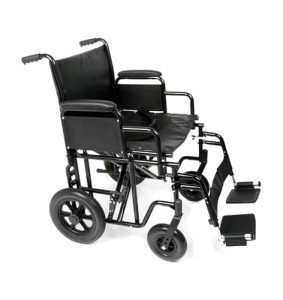Extra Wide Bariatric Wheelchair With 24" Seat
Frame
Wheelchairs are usually made in a standard width of 16" (narrow adult), 18" (standard grownup) or 20" (broad adult). However, some wheelchair users need a seat width larger than these requirements. These additional broad bariatric wheelchairs are typically fitted by a professional and based on the user's measurements.
In order to get the most comfortable and safe and secure trip for guests, it is necessary that wheelchairs are effectively sized. This implies that the wheelchair must be able to accommodate the user's size while being able to steer in tight spaces. This is why BriteLift uses tailored vehicles to transport wheelchair travelers. This consists of vans that can safely drive and maneuver large wheelchairs, permitting them to feel safe and comfortable in every ride. bariatric wheelchair for sale near me is the only way to offer the most reliable transportation for wheelchair travelers.
Seat
Bariatric wheelchairs are bigger than basic wheelchairs and are created to accommodate people who are much heavier or broader. This additional large bariatric wheelchair from Medline features a 24" seat and a carbon steel frame with rust- and chip-resistant chrome plating. The wheelchair has tool-free push-button adjustable footrests and easy-to-clean vinyl upholstery. It can support up to 500 pounds.
When choosing the best wheelchair width, it is necessary to measure the user sitting typically on a flat surface area across their best part of the lap which is normally their hips. It is likewise advised that you use a yardstick instead of a measuring tape as it tends to provide a more accurate measurement. If the user will be using a winter season coat then an extra 2" need to be contributed to the measurement of their seat width.
Weight Capacity
A bariatric wheelchair is generally bigger and much heavier than standard wheelchairs. This is why they require more cautious maneuvering. Chauffeurs require to be trained in managing these passengers. Moreover, lorries require to have enough space for these chairs along with ramps and wheelchair lifts. In addition, they require to understand how to schedule these rides beforehand.
When picking the chair width, it is essential to measure the user's largest point in the seat, which is typically the hips. Many wheelchair makers likewise provide a yardstick that can be utilized to assist with this measurement. When determining a person's width, it is best to take the measurement directly across and not cover the tape around their hips which can provide an incorrect reading.
In some cases, the largest part of an individual's thighs might be broader than their hips so this need to be considered when picking the chair width. In these instances, it is sometimes required to add an additional 2" to the chair width.

In general, the weight capacity of a bariatric wheelchair should not be gone beyond under any situations or severe injury may result. When using the chair, constantly make sure that it is on a steady and level surface area with front casters pointing forward and wheel locks engaged. In addition, never ever lean or shift the center of mass while being in the chair.
